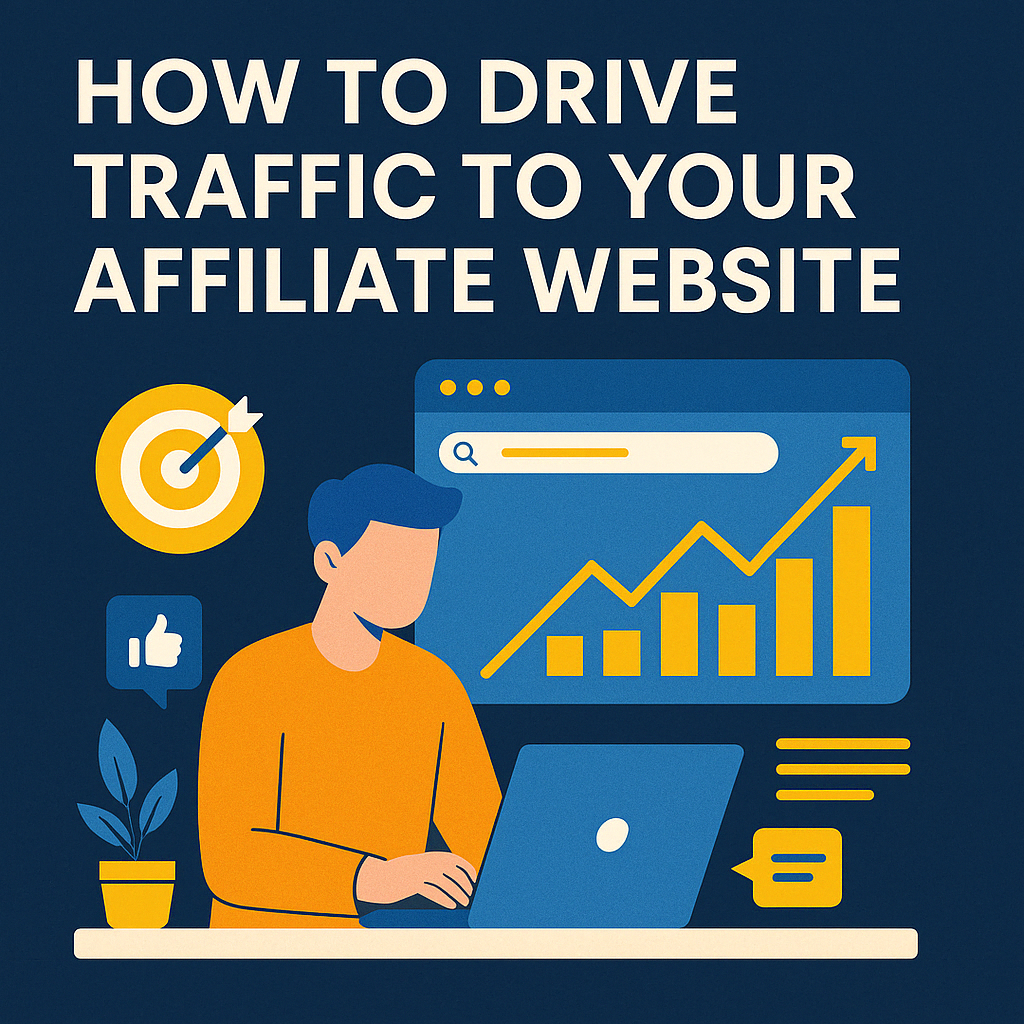From Clicks to Commissions — How to Write Content That Converts
I’ve learned that creating content that converts is key to successful affiliate marketing. As someone who’s been in your shoes, I want to share my proven strategies to help you craft compelling content that turns readers into buyers. You can achieve this by understanding your audience, promoting the right products, and using effective storytelling techniques. Let’s get started on this journey to boost your affiliate sales and grow your online business.
The key to writing content that converts is understanding who your target audience is and what they need. As I’ve learned from my own affiliate marketing journey, knowing your audience is important to creating content that resonates with them and drives sales.
Understanding Your Target Audience
Identifying Your Niche
Little do we know, finding the right niche can make all the difference in our affiliate marketing efforts. I’ve found that identifying a profitable niche is critical to creating content that attracts and engages our target audience.
Creating Audience Personas
Identifying the characteristics, needs, and pain points of our ideal audience is vital to creating content that speaks to them. As I’ve experienced, creating audience personas helps me tailor my content to their specific needs and increase conversions.
Creating audience personas involves researching and analyzing our target audience’s demographics, interests, and behaviors. By doing so, I can create content that resonates with them and addresses their specific needs, ultimately driving more sales and conversions.
Gathering Audience Insights
You can gain valuable insights into your audience’s needs and preferences by analyzing their behavior and feedback. I use tools like Google Analytics to track my audience’s engagement and identify areas for improvement.
To gather audience insights, I conduct surveys and polls to understand their pain points and interests. This helps me create content that addresses their specific needs and increases the chances of conversion. By staying up-to-date with industry trends and adjusting my content strategy accordingly, I can ensure that my content remains relevant and effective in driving sales.
One of the most important steps in creating content that converts is choosing the right products to promote. As an affiliate marketer, I’ve learned that selecting products that align with your audience’s needs is key to successful conversions.
Choosing the Best Affiliate Products
Researching High-Converting Products
Affiliate marketers like myself know that researching high-converting products is imperative to maximizing our earnings. I always look for products with high demand and low competition to increase my chances of success.
Evaluating Affiliate Programs
To succeed in affiliate marketing, you need to evaluate affiliate programs carefully. I look for programs with high commission rates, reliable tracking, and timely payments to ensure I get paid for my efforts.
The key to evaluating affiliate programs is to read reviews and ask questions. I always research the program’s reputation, commission structure, and support to ensure it’s a good fit for my audience and business goals.
Picking Products That Align with Your Audience
Choosing products that align with your audience’s interests is vital to successful conversions. I always consider my audience’s needs, preferences, and pain points when selecting products to promote.
That being said, picking products that align with your audience requires understanding your audience inside and out. I use analytics tools and feedback to gain insights into my audience’s behavior and preferences, and then choose products that meet their needs and solve their problems.
Once again, I find myself emphasizing the importance of headlines in affiliate marketing. As I’ve learned from my own experiences, a well-crafted headline can make all the difference in capturing your audience’s attention and driving conversions. In this chapter,
Crafting Compelling Headlines
, I’ll share my insights on how to create headlines that truly convert.
As I examine into the specifics, I want to highlight the subsection
Using Power Words
. Clearly, using the right words can evoke emotions and motivate your audience to take action. I’ve found that incorporating action-oriented words like “discover” and “unlock” can significantly boost engagement and conversions.
While exploring the art of headline crafting, I also want to discuss
Incorporating Numbers and Lists
. While it may seem simple, using numbers and lists can make your headlines more scannable and attention-grabbing. I’ve seen firsthand how using specific numbers, like “5 Ways to Boost Your Affiliate Sales,” can entice readers to click and learn more.
Incorporating numbers and lists into your headlines can have a profound impact on your affiliate marketing efforts. By using specific numbers, you can create a sense of urgency and exclusivity, making your audience more likely to engage with your content. For example, I’ve used headlines like “Limited Time Offer: 10% Off Your First Purchase” to drive sales and conversions.
There’s no denying the importance of testing and optimization in affiliate marketing. In the subsection
Testing Headline Variations
, I’ll share my approach to testing different headline variations to find the one that resonates best with my audience. By using tools like A/B testing, I’ve been able to identify the most effective headlines and make data-driven decisions to improve my content.
Another key aspect of testing headline variations is to track and analyze your results. By monitoring your click-through rates, conversion rates, and other key metrics, you can gain valuable insights into what works and what doesn’t. I’ve found that using this data to inform my headline creation process has been instrumental in driving consistent and significant increases in my affiliate sales. By applying these strategies, you can create headlines that truly convert and take your affiliate marketing efforts to the next level.
As I create content, I focus on providing value to my audience.
Creating Valuable Content
Keep in mind that valuable content is key to converting readers into buyers.
Identifying Content Types
I consider the following types of content:
- Blog posts
- Product reviews
- Tutorials
Assume that your content should be informative, engaging, and relevant to your audience.
| Content Type | Description |
|---|---|
| Blog posts | Informative articles on various topics |
| Product reviews | Honest reviews of products or services |
| Tutorials | Step-by-step guides on how to do something |
| Videos | Visual content that explains or demonstrates something |
| Podcasts | Audio content that discusses various topics |
Balancing Informative and Promotional Content
Building on this, I balance informative and promotional content to keep my audience engaged. Balancing act is necessary to avoid being too promotional or too informative.
Ensuring Unique and Original Insights
To ensure my content stands out, I focus on providing unique and original insights. Unique perspectives and experiences can make my content more relatable and memorable. Plus, I make sure to back up my claims with data and expert opinions to build trust with my audience. As I create content, I keep in mind that high-quality and engaging content is crucial for converting readers into buyers. I also consider the importance of SEO optimization and clear calls-to-action to drive traffic and sales. By following these strategies, I can craft compelling content that not only attracts readers but also encourages them to take action and make purchases through my affiliate links.
The Art of Storytelling
Despite the numerous strategies for creating engaging content, I find that storytelling is one of the most effective ways to capture your audience’s attention and encourage them to take action, which can lead to higher conversion rates and ultimately, increased affiliate sales.
Understanding the Importance of Stories
Now that we’ve touched on the power of storytelling, I want to emphasize that stories have a way of resonating with your audience on a deeper level, making your content more relatable and memorable, which is vital for building trust and encouraging conversions.
Crafting Personal Connections
Crafting a personal connection with your audience through storytelling is key to creating content that truly resonates with them, and I’ve found that sharing personal anecdotes and experiences can help establish a strong bond with your readers.
To craft personal connections, I try to be as authentic and transparent as possible, sharing my own experiences and lessons learned, which helps my audience feel more connected to me and my content, and more likely to take action and make a purchase through my affiliate links.
Using Stories to Highlight Benefits
Now, when it comes to using stories to highlight the benefits of a product or service, I believe it’s vital to focus on the results and how it can improve your audience’s lives, rather than just listing features, which can be a major turn-off for potential buyers.
Storytelling allows me to paint a picture of how a product or service can solve a problem or make a positive impact on someone’s life, which is a much more effective way to communicate the benefits and encourage conversions, and I’ve seen significant increases in sales when I use storytelling in this way.
Optimizing Your Content for SEO
Your content’s visibility is key to attracting potential buyers, and I’ve found that optimizing it for search engines can make a significant difference in my affiliate sales.
Conducting Keyword Research
There’s no denying that effective keyword research is necessary to creating content that resonates with your target audience, and I always make sure to identify relevant keywords that can help my content rank higher in search engine results.
Implementing On-Page SEO Techniques
Now that you’ve conducted your keyword research, it’s time to implement on-page SEO techniques that can help your content reach a larger audience, and I’ve found that optimizing meta tags and using header tags can be particularly effective.
Your on-page SEO techniques can make or break your content’s visibility, and I always make sure to use descriptive and keyword-rich titles that accurately reflect the content of my page, as well as write meta descriptions that entice users to click through to my site, and I’ve seen a significant increase in my click-through rates as a result.
Monitoring SEO Performance
Even with the best on-page SEO techniques in place, it’s necessary to monitor your SEO performance to see what’s working and what areas need improvement, and I use tools like Google Analytics to track my website traffic and conversion rates.
Keyword research is an ongoing process, and I always keep an eye on my keyword rankings to see how my content is performing, and I’ve found that adjusting my keyword strategy can help me stay ahead of the competition and drive more qualified leads to my site, which can ultimately lead to higher conversion rates and more affiliate sales.
As I continue to share my strategies for creating content that converts, I want to emphasize the importance of using clear calls to action (CTAs). Many affiliate marketers struggle with crafting effective CTAs, but with the right approach, you can significantly boost your conversions. In this chapter, I’ll share my tips on how to write CTAs that drive results.
Using Clear Calls to Action (CTAs)
Many affiliate marketers know that a strong CTA is important for driving conversions. I’ve found that by using action-oriented language and making my CTAs prominent, I can encourage more readers to take action.
Designing Effective CTAs
Some of the most effective CTAs are those that are clear, concise, and action-oriented. I make sure to use language that tells readers exactly what to do next, such as “Sign up now” or “Get started today”.
Placing CTAs for Maximum Impact
For maximum impact, I place my CTAs in prominent locations where readers are most likely to see them. This can be at the end of a blog post, in a sidebar, or even in a popup window.
Plus, I’ve found that using attention-grabbing graphics and contrasting colors can help my CTAs stand out and grab readers’ attention. By making my CTAs visually appealing, I can encourage more readers to click and take action.
Testing Different CTA Approaches
On top of designing and placing effective CTAs, I also believe in testing different approaches to see what works best. I’ve found that by trying out different language, colors, and placement, I can optimize my CTAs for maximum conversions.
CTAs are a critical component of any affiliate marketing strategy, and by testing and optimizing them, you can significantly boost your affiliate sales. I’ve seen it work for myself, and I’m confident it can work for you too – so don’t be afraid to experiment and try new things to find what works best for your audience.
Leveraging Visual Elements
All successful affiliate marketers know that visual elements can make or break the effectiveness of their content. I’ve found that using the right visuals can significantly increase engagement and conversions.
The Role of Images and Infographics
Remarkably, images and infographics play a vital role in breaking up text and making content more shareable. I use them to illustrate key points and make my content more memorable.
Choosing the Right Visuals
Assuming you want to maximize the impact of your visuals, it’s crucial to choose the right ones. I look for images that are high-quality and relevant to my content.
Understanding what makes a visual effective is key to choosing the right ones. I consider factors like color scheme, font style, and image resolution to ensure my visuals are consistent with my brand and engaging for my audience.
Incorporating Video Content
Now that video content is more popular than ever, I make sure to incorporate it into my strategy. I use videos to explain complex topics and showcase products in a more engaging way.
Video content has been a game-changer for my affiliate marketing efforts. I’ve found that it can increase conversions by up to 20% and boost engagement by up to 50%. By using video content, you can build trust with your audience and establish yourself as an authority in your niche.
Now that we’ve covered the basics of affiliate marketing, let’s investigate
Building Trust with Transparency
. I believe that trust is the foundation of any successful affiliate marketing strategy, and it’s necessary to be open and honest with your audience to build a loyal following.
Being Honest About Promotions
On the path to building trust, I always make sure to be upfront about the products I promote. I clearly disclose any affiliations and ensure that my audience knows when I’m recommending a product in exchange for a commission. This transparency helps to establish a strong bond with my readers and increases the likelihood of conversions.
Disclosing Affiliate Relationships
One of the most important aspects of transparency is disclosing my affiliate relationships. I always make sure to clearly state when I have a financial interest in a product or service, and I provide my audience with all the necessary information to make an informed decision. This honesty is necessary for building trust and avoiding any potential legal issues.
A key part of disclosing affiliate relationships is being clear and concise in my messaging. I make sure to use simple language and avoid any confusing jargon that might lead to misunderstandings. By being open and honest about my affiliations, I can build a loyal following and increase the chances of successful conversions. I also ensure that I comply with the Federal Trade Commission (FTC) guidelines on affiliate marketing, which requires me to clearly disclose my relationships with product providers.
Establishing Credibility Through Validation
If you want to establish credibility with your audience, it’s necessary to validate your claims and provide social proof. I do this by sharing testimonials from satisfied customers, showcasing success stories, and highlighting any expert endorsements I’ve received. This helps to build trust and credibility with my audience, making them more likely to take action and make a purchase through my affiliate link.
Being able to establish credibility through validation is a powerful tool in affiliate marketing. I use customer reviews, ratings, and case studies to demonstrate the effectiveness of the products I promote. By providing this social proof, I can increase the chances of conversions and build a loyal following of readers who trust my recommendations. I also make sure to follow up with my audience and provide them with support and guidance to help them achieve their goals.
As I continue to share my experiences with affiliate marketing, I want to emphasize the importance of engaging with your audience. Unlike other marketing strategies, building a relationship with your readers can significantly increase conversions. In my experience, when you take the time to understand and interact with your audience, they are more likely to trust your recommendations and make purchases through your affiliate links.
Engaging with Your Audience
In the matter of engaging with your audience, I’ve found that encouraging comments and feedback is vital.
Encouraging Comments and Feedback
If you want to build a loyal following, you need to create a space where your readers feel comfortable sharing their thoughts and opinions. I make sure to end my posts with a question or a call to action that encourages readers to leave a comment.
Responding to Engagement Promptly
Promptly responding to comments and messages is vital for building trust and showing your audience that you value their input. I try to respond to every comment and message within a few hours of receiving them.
Another key aspect of responding to engagement promptly is to keep the conversation going. When a reader leaves a comment, I try to respond in a way that encourages them to continue the conversation. This not only builds a relationship with the reader but also creates a sense of community around my content.
Building a Community Around Your Content
On the topic of building a community, I believe that creating a loyal following is one of the most effective ways to increase conversions. When your readers feel like they are part of a community, they are more likely to trust your recommendations and make purchases through your affiliate links.
Around my own content, I’ve noticed that building a community has been instrumental in increasing engagement and conversions. By creating a space where readers can interact with each other and with me, I’ve been able to build a loyal following that trusts my recommendations and is more likely to make purchases through my affiliate links.
For affiliate marketers like myself, email marketing is a game-changer. In this chapter, I’ll share my strategies for utilizing email marketing to boost your affiliate sales. From building an email list to crafting effective email content, I’ll guide you through the process of creating a successful email marketing campaign that drives conversions.
Building an Email List
If you’re looking to get started with email marketing, building a strong email list is imperative. I’ve found that offering valuable incentives such as free e-books or webinars can encourage people to sign up for your list. By providing value upfront, you can build trust with your audience and increase the chances of them becoming loyal subscribers.
Crafting Effective Email Content
Strategies for crafting effective email content include personalizing your messages, using attention-grabbing subject lines, and keeping your content concise and engaging. I’ve seen significant improvements in my email open rates and click-through rates by using these strategies.
To craft effective email content, I focus on providing value to my subscribers. This can be in the form of exclusive tips, promotions, or early access to new products. By making my emails informative and engaging, I can build a loyal following and increase the chances of my subscribers making a purchase through my affiliate links.
Nurturing Relationships Through Email
Email marketing is all about building relationships with your audience. I’ve found that by being consistent and authentic in my emails, I can build trust with my subscribers and increase the chances of them becoming loyal customers. By sharing my personal experiences and providing value through my emails, I can create a loyal following that will support my affiliate marketing efforts.
Plus, by using segmentation and personalization in my email marketing campaigns, I can tailor my messages to specific groups of subscribers and increase the effectiveness of my emails. This has been a game-changer for my affiliate marketing business, and I highly recommend it to anyone looking to take their email marketing to the next level.
Analyzing and Improving Your Content
All successful affiliate marketers know that analyzing and improving their content is key to increasing conversions. I use tools like Google Analytics to track my website’s traffic and engagement, and I’m always looking for ways to optimize my content for better results.
Measuring Content Performance
Clearly, understanding how your content is performing is necessary to making informed decisions. I track my click-through rates and conversion rates to see what’s working and what’s not, and I use this data to make adjustments to my content strategy.
Analyzing User Behavior
Any affiliate marketer worth their salt knows that understanding their audience is crucial to success. I use tools like heat maps and scroll maps to see how my users are interacting with my content, and I use this information to identify areas for improvement.
Improving my content based on user behavior has been a game-changer for my affiliate marketing efforts. By identifying pain points and optimizing my content to better meet the needs of my audience, I’ve been able to increase my conversions and earn more commissions.
Implementing Feedback for Continuous Improvement
While it’s easy to get caught up in the day-to-day of creating and promoting content, I know that continuous improvement is key to long-term success. I regularly solicit feedback from my audience and use it to make adjustments to my content strategy, and I’m always looking for ways to stay ahead of the curve.
The most important thing I’ve learned about implementing feedback is to be open-minded and willing to make changes. By listening to my audience and acting on their feedback, I’ve been able to create content that truly resonates with them and drives real results for my affiliate marketing efforts.
Common Mistakes to Avoid in Affiliate Content
To create effective affiliate content, I need to be aware of the common mistakes that can hinder my success. As I share my experiences, you’ll learn how to avoid these pitfalls and create content that converts.
Over-Promoting Products
Now, I know it’s tempting to constantly promote products, but over-promotion can be a turn-off for your audience. I’ve found that striking a balance between promotion and valuable content is key to keeping your readers engaged.
Ignoring Audience Needs
There’s nothing worse than creating content that doesn’t resonate with your audience. I’ve learned that understanding your audience’s needs and desires is important to creating content that truly connects with them.
Content that ignores audience needs is not only ineffective but also damaging to your reputation. As I create content, I always ask myself if it’s something that will genuinely help my audience, and if not, I go back to the drawing board.
Neglecting Content Quality
On the other hand, neglecting content quality can be disastrous for your affiliate marketing efforts. I’ve found that investing time and effort into creating high-quality content pays off in the long run, as it builds trust and credibility with your audience.
To create high-quality content, I focus on providing valuable insights and actionable tips that my audience can apply to their lives. By doing so, I’ve seen a significant increase in engagement and conversions, and I’m confident that you can achieve the same results by following my approach.
Now that we’ve covered the basics, let’s probe
Tips for Creating High-Converting Content
. To create content that converts, I focus on valuable and engaging content, using the following tips:
- Know your audience
- Promote the right products
Perceiving what works best for your audience is key to boosting your affiliate sales.
Content that resonates with your audience is important, which is why I’d like to discuss
Staying Updated with Trends
. Creating content that is relevant and timely can help increase your affiliate sales, and I achieve this by staying up-to-date with the latest trends and industry news.
HighConverting content is my goal, and to achieve this, I use
A/B Testing Your Content
. By testing different versions of my content, I can determine what headlines, calls-to-action, and visuals work best for my audience.
Understanding the importance of A/B testing is vital to creating high-converting content. When I test different versions of my content, I can identify what elements are most effective in driving conversions and make data-driven decisions to improve my content. This helps me to continually optimize and refine my content to achieve the best possible results.
Content that drives results is what I strive for, and to achieve this, I look to
Learning from Successful Affiliates
. By analyzing the strategies and techniques used by successful affiliates, I can gain valuable insights into what works best and apply these lessons to my own content creation, focusing on valuable and engaging content.
Updated with the latest strategies and techniques, I can create content that truly resonates with my audience. When I learn from successful affiliates, I can see what tactics and strategies are driving results for them and adapt these to fit my own unique voice and style, helping me to continually improve and optimize my content for maximum impact.
Resources to Enhance Your Content Creation
Not every marketer has the resources they need to create high-quality content. I’ve found that having the right tools and knowledge can make all the difference in creating content that converts.
Recommended Tools and Platforms
Now that you know the importance of quality content, it’s time to explore the tools that can help you achieve it. I use SEO optimization tools and content management platforms to streamline my content creation process and ensure my content reaches a wider audience.
Online Courses and Webinars
The key to creating effective content is to stay up-to-date with the latest trends and best practices. I’ve taken online courses and attended webinars to improve my content creation skills and learn from experienced marketers.
Courses on content marketing, affiliate marketing, and digital marketing have been incredibly helpful in my journey as an affiliate marketer. By investing in my education, I’ve been able to increase my affiliate sales and create content that resonates with my audience.
Books and Articles for Further Learning
If you’re looking to dive deeper into the world of content creation and affiliate marketing, I recommend checking out books and articles from industry experts. They offer valuable insights and practical tips that can help you improve your content and increase your conversions.
To take your content creation to the next level, I suggest reading books on copywriting, content marketing, and affiliate marketing. These resources will provide you with the knowledge and skills you need to create content that converts readers into buyers and helps you achieve your affiliate marketing goals.
Final Words
To wrap up, I believe you now have the tools to create content that converts. I’ve shared my own strategies, and I’m confident you can apply them to boost your affiliate sales. Take action, stay authentic, and continuously improve your content to build trust with your audience and drive sales through your affiliate links.







0 Comments